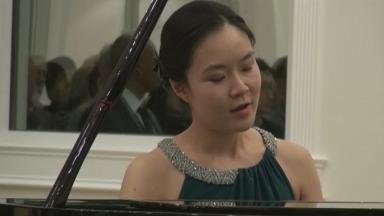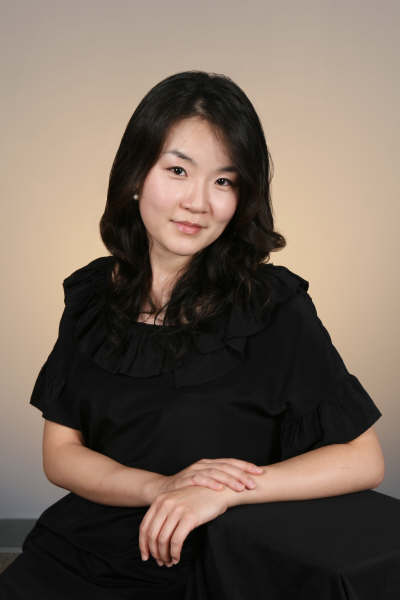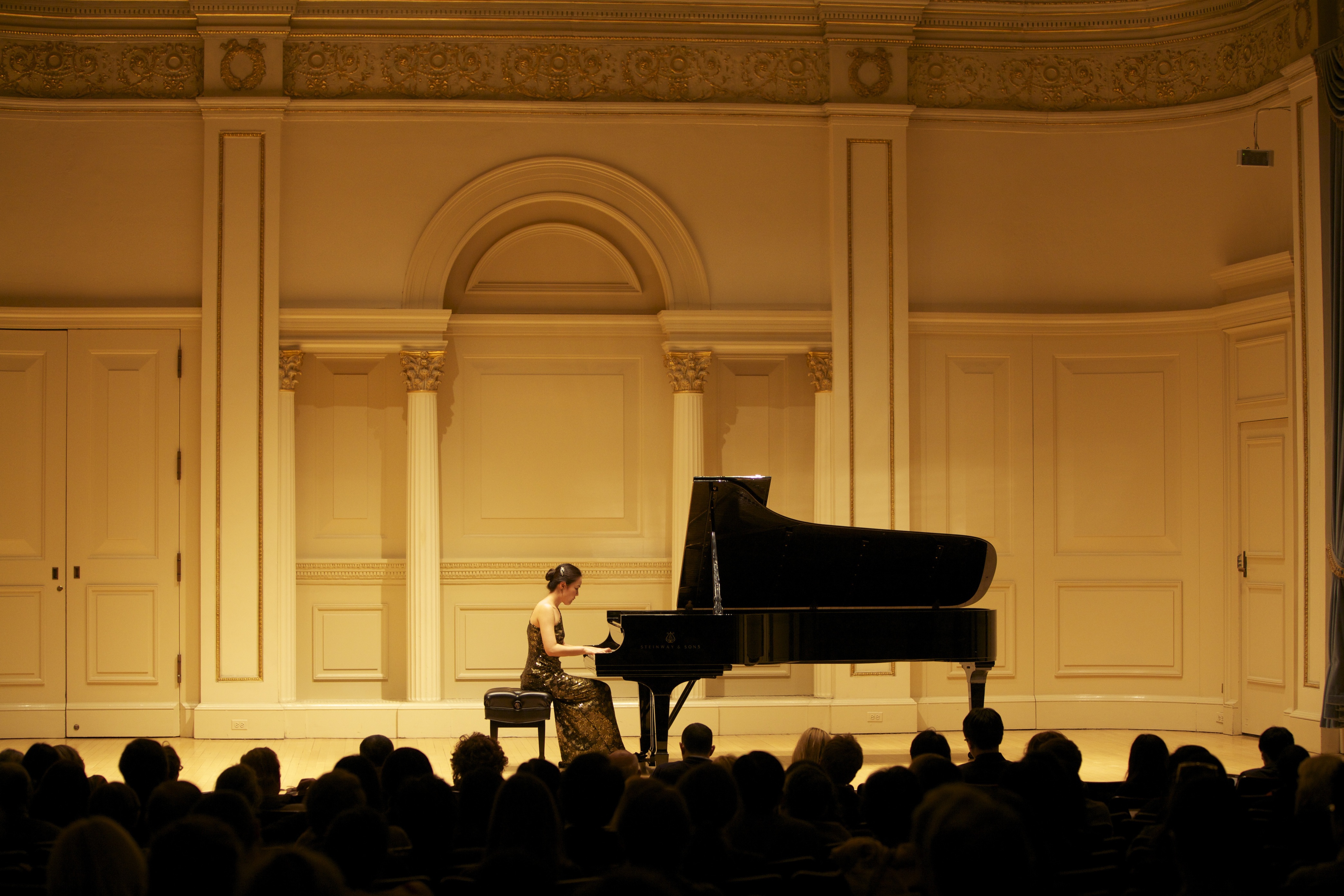It seemed as though there were two recitals happening side-by-side on Thursday, December 18, 2014. The first: a display of superior pianistic skill, with thundering climaxes, ethereal pianissimi, lyricism, beautiful tone, and totally committed playing. The second: an overview of one contemporary composer’s work that, to put it positively, would be called “eclectic, polystylistic.” To put it less positively: “derivative” and at times “cliché.”
Both composer and pianist are obviously totally involved with a certain Christian mystical communion with their beliefs. This allies them with Bach and Messiaen (a large influence on Shinuh Lee), and that is not bad company at all. Wasn’t it Stravinsky who said “Steal only from the best.”?
Shinuh Lee’s three Chorale Fantasies are ambitious works, difficult to play, but somewhat unwieldy in their attempt to illustrate religious mysticism with musical tones. She is very lucky indeed to have such a gloriously gifted pianist as Hyojung Huh as her advocate.
The three works were played in the reverse order of their composition. The third Fantasy “Alleluia,” began with impressionistic sounds, awash in pedal. Someone should show Ms. Huh how to release the pedal without the annoying “damper catch” sound at the end, for it detracted from the rapt intensity of the lingering resonances. Birdsong made its entrance (Messiaen), and mostly one was reminded of Scriabin and Debussy. At times, a simplistic interruption was heard in imitating voices. Much of the time, I wanted Ms. Lee to stay with one idea longer. However, at other times I wished certain passages were better edited. This fantasy didn’t really sound like what the word “Alleluia” denotes to me (and did to the early Christians): joy and triumph.
The second fantasy, “The Collar,” was based on a not-very-subtle mystical poem by 17th century poet George Herbert. I was an English minor in college, and even I find Herbert rough going today. How all this became music was again, a matter of subjective opinion. The poem tells of the weary, cynical poet who is lamenting his sterility, when suddenly he listens and there is the voice of God calling him “Child.” The “collar” is the restraining device that keeps us connected to our divinity, but that makes us seem like dogs, doesn’t it? Of course, clerics wear collars too. In this work, influences included: Copland (Piano Variations), Boulez (without the intellectual rigor), Bartók, and Prokofiev. It was uneven in its pacing, not Ms. Huh’s fault, who, by the way, played the entire incredibly complex evening from memory.
After intermission came the first Fantasy “Comfort, comfort my people,” based on selections from the Bible. Each section has a subtitle taken from The Screwtape Letters by mystic author C.S. Lewis. Here, Ms. Lee introduced her own original chorale melody to serve as intermezzi between the more tempestuous sections dealing with man’s sinful nature. Eventually she quoted from Bach himself-Christ lag in Todesbanden (Christ lay in the bonds of death, used in Cantata BWV4), and the comparison was not kind to Ms. Lee’s own chorale, which was bland by comparison. Her influences here seemed to be: Prokofiev (the “Montagues and Capulets,” from Romeo and Juliet), Ginastera, Bach-Busoni, Rachmaninoff, and Messiaen’s Vingt regards sur l’enfant Jésus (Twenty Looks at the Baby Jesus, which sounded more like a borrowing rather than a mere influence). Ms. Huh had the opportunity to use some fierce fist-clusters in the lowest register of the piano; and I must say Ms. Lee’s use of the total instrument and its color possibilities was most attractive. I just wish that her compositional voice was more original.
As for Ms. Huh, I’d dearly love her to give a recital of more varied fare, without abandoning her muse, Ms Lee. Bach, late-period Liszt, Messiaen, Scriabin would all suit her. Ms. Huh, as George Herbert said: “There is fruit, and thou hast hands.”



